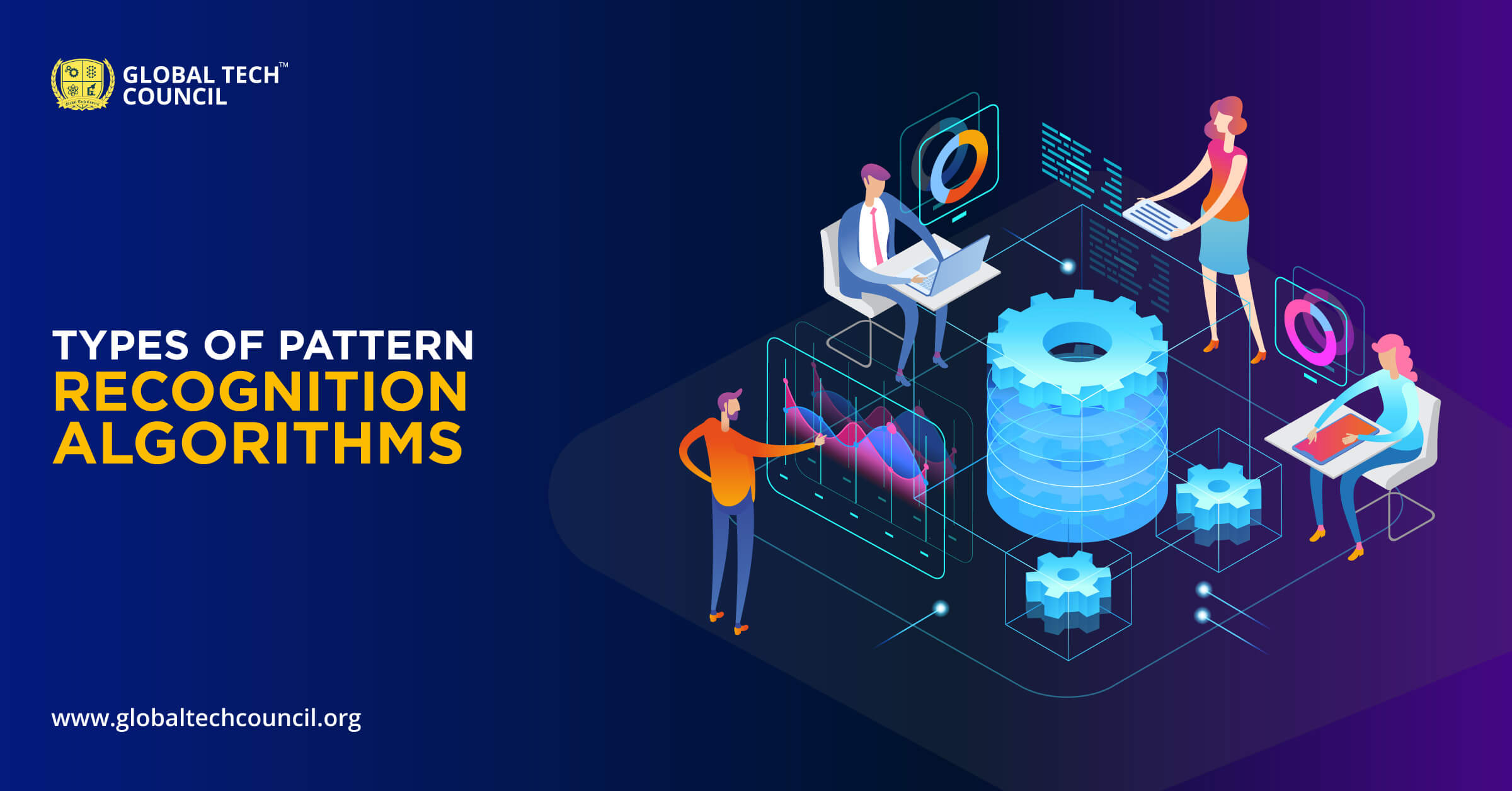
If you are looking for types of algorithms in pattern recognition, you have landed on the right page. This article talks about what pattern recognition is and discusses different types of algorithms used in machine learning, artificial intelligence, and data science.
What is Pattern Recognition?
Pattern recognition involves the recognition of surrounding objects in an artificial manner achieved through machine learning and pattern recognition algorithms. In other words, it is the process of identifying the trends in the given pattern. In the Machine Learning(ML) space, pattern recognition shows the use of robust algorithms in order to identify the regularities in the given set of data. Such a technique provides the solution to various problems such as facial expressions recognition, computer vision, speech recognition, and many others.
Looking for the best Machine Learning certifications? Want to get started as an ML developer? Check out Global Tech Council now!
Types of Algorithms in Pattern Recognition
Pattern Recognition algorithms can be categorized as:
- Statistical Techniques
- Structural Techniques
- Neural Network Approach
- Template Matching
- Fuzzy Model
- Hybrid Model
Statistical Techniques
In Statistical modeling, modeling identifies where the specific piece belongs. It is a mathematical representation of observed data and refers to the use of statistics to learn from examples. Here the pattern is defined in terms of features and is selected in a manner that different patterns take space without overlapping.
The selected features are crucial in the establishment of clusters. It explains the probability distribution, decision boundaries, etc., and then such patterns are proposed to further processing. Then testing patterns are applied for the recognition of patterns, leading to further classification methods.
Structural Algorithm Model
For complex pattern recognition, for instance, multi-dimensional entities, structural algorithm models are best suited for. In this model, patterns are hierarchical in nature, meaning they are categorized into subclasses. This model defines a complex relationship between various elements. In this model, there are sub-patterns, and the model is extended to structure and its forms in patterns. This model is used for various purposes such as shape analysis, image analysis, and others where measurable structures are confirmed.
Neural Network Approach
Neural networks are used efficiently in classification. This approach employs biological concepts to recognize patterns, and the result of this effort is the discovery of artificial neural networks.
For pattern recognition, the most common method is feed-forward networks, which means that there is no feedback to the input. As humans learn from their past experiences and mistakes, such networks also learn from their mistakes by giving feedback to the input patterns. Such feedback assists in restoring the input patterns and making them error-free. Here it is important to note that the neural networks’ performance improves as the hidden layers increase.
Are you a beginner in the Machine Learning domain? Want to learn and become a Certified ML developer. Your wait is over. Check out Global Tech Council now!
Template Matching
Template Matching involves the process of matching the target’s features with the predefined template and identifying the target by proxy. It is a technique used to find a sub-image of a target image that resembles a template image.
This technique is used to define similarity among two similar objects. When the pattern is matched, it is stored in templates, and the templates are given flexibility for scalar and rotational variations. The capability of this method depends upon the already stored templates in the database.
Fuzzy Model
The fuzzy logic is a form of many-valued logic in which the truth values of variables lie between 0 and 1, both inclusive. It is applied in order to handle partial truth, where the truth value ranges between entirely true and entirely false. This pattern recognition technique is known to produce the best end results compared to other techniques because of the fact that here modeling is for uncertain domains and components for recognition.
Hybrid Model
When multiple algorithms are deployed together, that technique is known as the Hybrid algorithm model. For instance, a combination of neural nets with fuzzy systems or hidden Markov models or a combination of symbolic and subsymbolic learning are all hybrid strategies for pattern recognition. The best part of using such an approach is that it employs the advantages of all the methods involved and is more appropriate for human perception.
Concluding Lines
Pattern recognition techniques follow various advantages. They are not only helpful in the analysis of trends and making predictions, but they are also beneficial in the identification of objects at varying distances and angles. They can be applied to diverse domains, including stock market, medical fields, finance industry, and others, to make valuable predictions. Since they are highly automated, they offer efficient solutions to real-time problems.
If you are wondering which pattern recognition technique is the best and which to choose, let me tell you that a wise decision is to utilize these algorithms as per the need of the problem statements. If you still have doubts, you can learn pattern recognition techniques used in artificial intelligence and machine learning and become a Certified professional by enrolling in Global Tech Council.
If you choose to be a Machine Learning Developer or an ML Expert, check out the training and online courses at Global Tech Council.
Leave a Reply